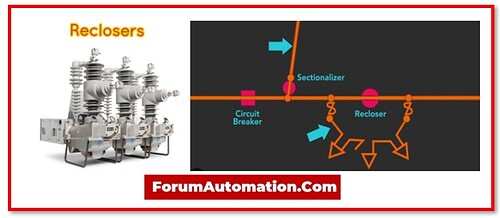What is reclosing?
The majority of faults on the transmission & distribution networks are of an intermittent form; a fault may arise between the phases or between the ground and lightning strike, small animal, etc.
The animal or piece of debris that caused the fault to start usually burns or falls away, or in the instance of the lightning strike, it was by its very nature intermittent. There is no cause for delaying the closure of these intermittent defects once they have been resolved.
This is basically the purpose of reclosing. Re-energizing a circuit (or) making an attempt to do so quickly when a problem is fixed in order for service to be automatically restored.
How can a recloser know that an intermittent fault exists when it closes again?
Reclosers only become aware that they have reclosed into an intermittent defect after they do so and the fault has been eliminated. If the fault persists, it is considered a permanent fault, and the reclosing mechanism’s response to a fused opening or closing depends on how well it synchronizes with fuses & sectionalizers.
In order to restore as much functionality as possible while still isolating the permanent defect, the reclosers will then reclose through a sequence of shots.
When a defect is fixed, does a recloser automatically close again?
After a defect, a recloser will usually try to close again 0.1 to 10 seconds later.
This brief pause of a few seconds is intended to give the ionized air from the fault time to disperse. Ionized air creates a low impedance channel for re-strikes, which is why it must be allowed time to disperse.
When re-energizing between phases, for instance, the transmission (or) distribution line may be able to re-strike through the ionized air created by the lightning strike, or it may ground upon reclosing or re-energizing.
If the issue was genuinely intermittent, a short wait might enable for a restrike to occur and be considered a permanent fault rather than prompting the reinstatement of service.
One can also view an electrical switch that opens when there is a load because the conductive nature of the ionized air. An upward arc is produced. The arc naturally lengthens upward because the hot, ionized air, or the conductive route, is less dense than cold air and rises naturally.
If the fault is intermittent, reclosing can occur and restore service immediately; otherwise, a delay is necessary, as the intermittent fault may recur and cause a second fault.
